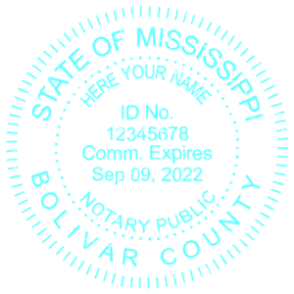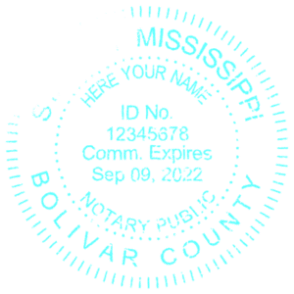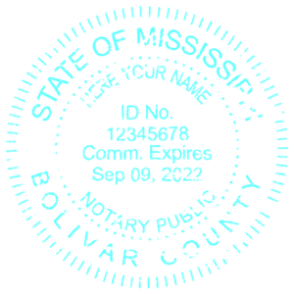Is the Seal or Stamp Genuine?
Seals and stamps have long been crucial for verifying the authenticity of documents. While stamps are primarily used to simplify paperwork and lack legal authority, seals carry significant legal weight in certifying documents. They include essential, identifiable details that grant them authority, akin to a team of experts meticulously reviewing every aspect. It’s not just about marking a document but ensuring its content is officially endorsed, clear, and complete, giving it the same level of authenticity as a signature.
How Seals and Stamps Are Produced
 Seals and stamps can be crafted at engraving workshops or by printing service providers, and you can contact them to begin the process. Materials like rubber, polymer, or composite are used to create them. Authentic seals must adhere to specific shapes and sizes, following precise templates, much like a team executing detailed instructions. Historically, seals have been displayed in public spaces or attached to important documents. Due to their significance, some individuals attempt to forge them in elaborate scams. Therefore, if you need a seal, ensure you work with a trusted provider and verify its authenticity. Dealing with a reputable company helps avoid potential issues.
Seals and stamps can be crafted at engraving workshops or by printing service providers, and you can contact them to begin the process. Materials like rubber, polymer, or composite are used to create them. Authentic seals must adhere to specific shapes and sizes, following precise templates, much like a team executing detailed instructions. Historically, seals have been displayed in public spaces or attached to important documents. Due to their significance, some individuals attempt to forge them in elaborate scams. Therefore, if you need a seal, ensure you work with a trusted provider and verify its authenticity. Dealing with a reputable company helps avoid potential issues.
Why Fake Seals Are Created
Why do people create counterfeit seals, and what do they gain? In some cases, careless handling during the production and storage of seals and their components increases the risk of forgery. Law enforcement data reveals that many forgeries stem from sloppy practices involving tools like typeset fonts, numbering machines, and other stamping equipment. In recent years, poor record-keeping for critical documents has allowed fraudsters to exploit these vulnerabilities. If someone attempts to forge an official seal, they might use one of three methods:- Creating a completely fabricated document with a counterfeit seal;
- Using a blank document with falsified elements;
- Altering specific parts of a document, often the seal details, to create an illusion of legitimacy.
How Experts Detect Counterfeit Seals
Forgery experts find it relatively easy to spot a fake seal if they have access to an original. With a genuine seal for comparison, authentication is usually straightforward, as experts can identify subtle differences in the imprint – much like a specialized team trained to detect inconsistencies. However, more sophisticated forgeries may require a detailed examination of the ink, spacing, and texture of the seal impression. Experts undergo rigorous training to identify such details, enabling them to determine whether a seal has been tampered with.
Techniques Used to Forge Seals and Stamps
 One common method involves placing an authentic seal on a counterfeit document. Unlike genuine documents, forgers moisten the paper in a specific area before applying the seal. This process, though seemingly simple, results in a blurry imprint, creating a seal that appears genuine but has noticeable flaws.
One common method involves placing an authentic seal on a counterfeit document. Unlike genuine documents, forgers moisten the paper in a specific area before applying the seal. This process, though seemingly simple, results in a blurry imprint, creating a seal that appears genuine but has noticeable flaws.
- Blurred or faded ink strokes caused by moisture;
- Double-drawn characters, often traced with aniline ink;
- A lack of gloss on the moistened area of the paper;
- Fiber damage on the paper when an intermediate template, or seal pull, is used.
Homemade Templates and Other Methods
Another forgery method involves creating homemade templates using materials like linoleum, rubberized bases, wood, or even potato skins. The forger replicates the desired image on the template, removing excess paint for the final product. This approach often results in minor flaws that experts can easily spot. Similar to specialized training, these experts recognize issues like uneven character alignment, missing serifs or angled strokes, and disrupted radial alignment in circular seals. They also identify fonts that don’t meet standard requirements and skewed or overly sharp stroke ends.
Sometimes, homemade metallic templates may leave excess ink on the document. The photozincographic method, where an imprint is projected onto a zinc plate and etched, can also leave distinct marks. The resulting image often shows irregular edges, missing fine details, or unusual sizing. This attention to detail mirrors the precision required in specialized fields to maintain uniformity. Therefore, if you’re considering creating a seal or stamp, remember that even minor flaws can compromise authenticity.
Identifying Fake Seals Using Wet Copying
 Detecting forgeries created through wet copying is a complex process that requires skilled experts to identify subtle signs of falsification. This method, often used to create convincing duplicates, involves tracing a seal’s outline with aniline ink onto heavy paper, then pressing it onto a dampened document. Without the precise conditions of a legitimate seal, this technique leaves flaws that trained professionals can detect. Let’s explore what experts look for and why each detail matters.
Detecting forgeries created through wet copying is a complex process that requires skilled experts to identify subtle signs of falsification. This method, often used to create convincing duplicates, involves tracing a seal’s outline with aniline ink onto heavy paper, then pressing it onto a dampened document. Without the precise conditions of a legitimate seal, this technique leaves flaws that trained professionals can detect. Let’s explore what experts look for and why each detail matters.
Ink Saturation and Stroke Quality
In genuine seals, ink is applied with consistent saturation, creating a crisp appearance without fading. However, the heavy paper used in wet copying can lead to uneven ink application. Forgeries may appear light or patchy in areas where they should be bold. When the ink doesn’t fully saturate, the strokes look faint, and those handling the original can feel the difference. While it may seem passable at first glance, a trained expert can easily spot these flaws. This lack of saturation is a critical red flag for professionals who know what to look for.
Blurred Lines and Paper Warping
Applying a traced seal to damp paper can cause the ink to feather slightly, creating a blurred effect absent in authentic stamps. This suggests the forger lacked familiarity with standard methods or access to proper tools. The moisture also causes paper fibers to expand and warp around ink-heavy areas, leaving a noticeable texture when touched. Those who underestimate these differences fail to understand how document examiners, trained to notice even the smallest inconsistencies, operate.
Asymmetry in Characters and Line Irregularities
Authentic seals feature symmetry that hand-traced copies often lack, as slight deviations in character proportions or alignment become apparent when copying by hand. This is especially noticeable in characters requiring perfectly straight lines or circular shapes. Wet copying doesn’t allow for exact replication, resulting in uneven or cut-off lines. Even skilled forgers struggle to produce flawless copies. Such deviations, though subtle, immediately alert experts to potential fraud. A simple comparison between the original and the copy reveals these flaws.
Font Discrepancies and Stylings
Official seals use specific fonts and stylings that are difficult to replicate precisely, especially with hand-traced copies. Slight variations in character shapes, sizes, or spacing can expose a forgery, as these elements are strictly regulated in authentic seals. A forger cutting corners by not adhering to these standards often produces fonts that appear off. In such cases, the font alone can reveal the document’s authenticity.
Additional Signs and Techniques
Experts use various methods to detect forgeries, from analyzing ink composition to evaluating paper texture. They may examine the seal under a microscope to check for excessive ink spread or look for watermarks unique to official documents. As technology advances, tools like AI-based programs and online databases help document examiners stay ahead of fraudsters. It’s no longer just about visual clues; experts can leverage advanced tools to ensure accuracy. Without access to these resources, forgers often overlook critical details, making it nearly impossible to deceive a trained professional.
By carefully assessing ink consistency, character symmetry, and font accuracy, forensic experts continue to safeguard the integrity of official documents.
Conclusion
In conclusion, ensuring the authenticity of documents through proper seal usage is essential for maintaining trust in legal and business interactions. Whether you’re working locally or on a larger scale, understanding the differences between genuine and counterfeit seals can prevent costly mistakes.
If you have questions about seal integrity, don’t hesitate to reach out at StampsDesigner.com. Join the discussion by visiting our blog or sending us an email. Our team is here to help you navigate these complexities and ensure your documentation remains secure.
Published on 2024-11-23

